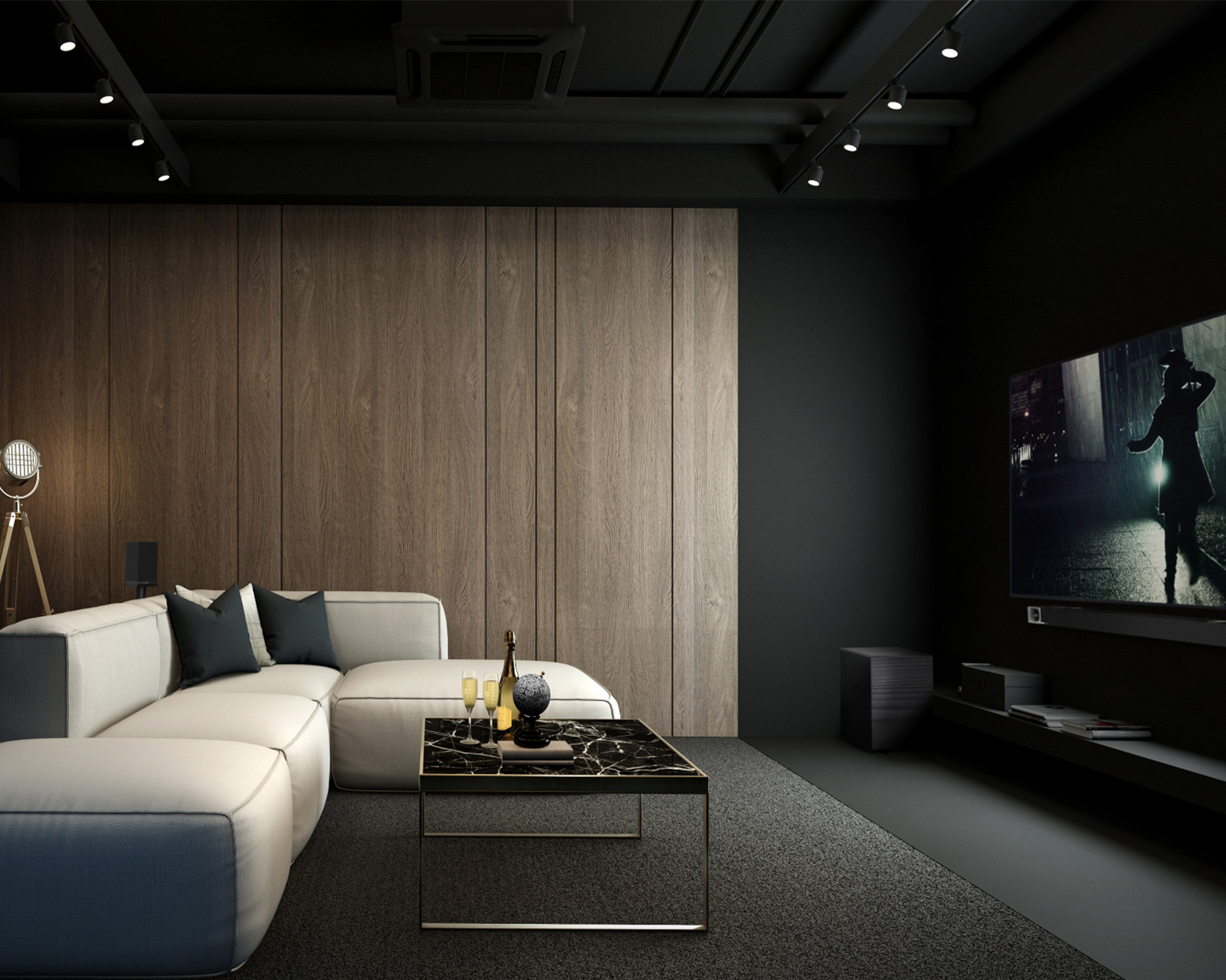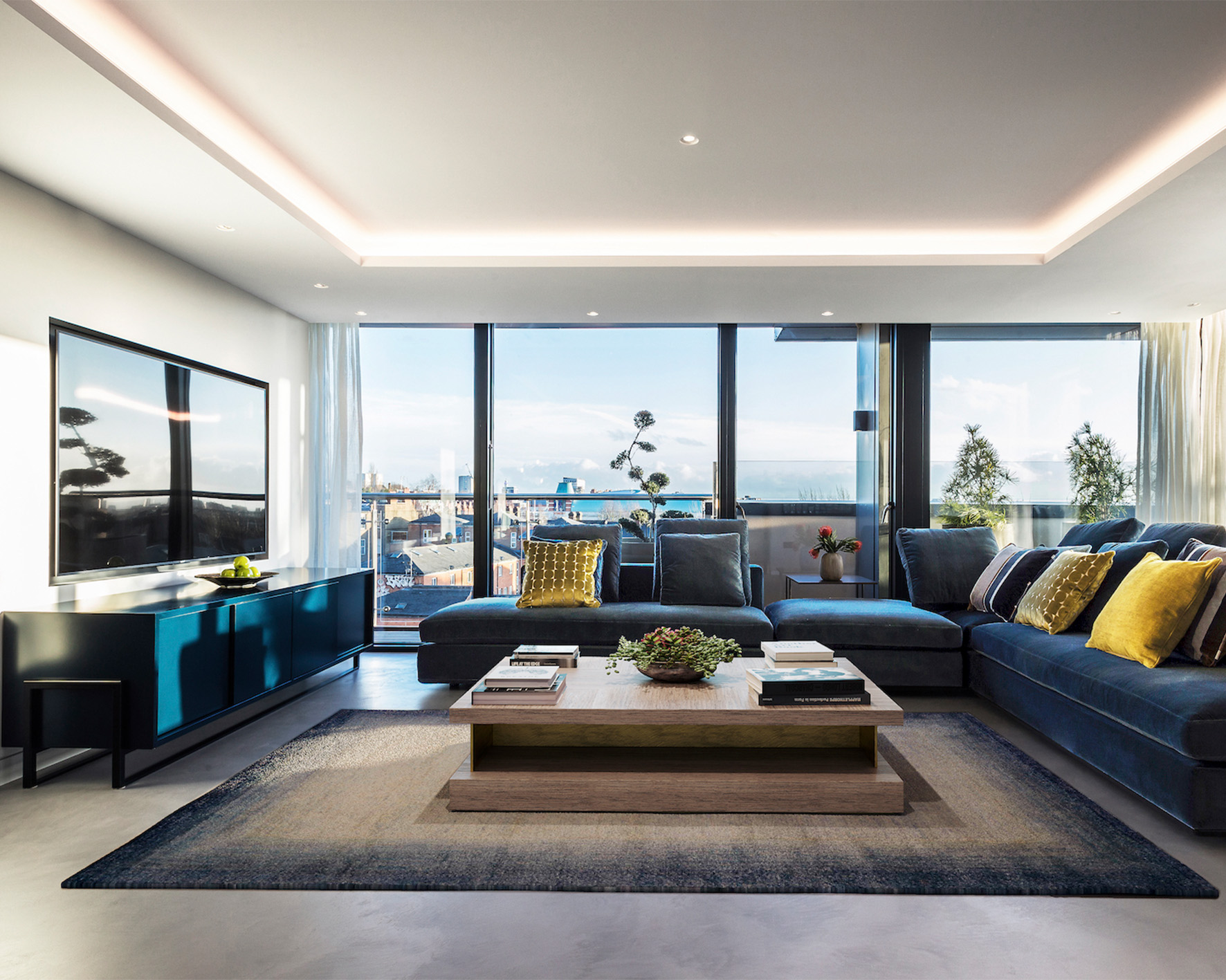Soundbar or surround sound system – which is best for my home?
Choosing between a soundbar or surround sound system is made easier with this expert guide to the best audio tech chosen to add cinematic style to your living room

If you're choosing between a soundbar or surround sound system then there is a lot to consider. It is an important question, as a top-quality audio system implies you've already forked out a decent sum for one of the latest flat-screen TVs, and you'll want to enhance your television's sound.
‘As TVs get slimmer, manufacturers have less space to put speakers in, so their sound quality can be compromised,’ says Mike Ranpura, technology expert at Smart Life AV and CEDIA Advanced member. ‘Some big-name brands such as Sony and Panasonic have invested in higher quality sound from the speakers built into their TVs, but a soundbar or a surround sound system is always going to improve the overall cinematic experience.’
But with so many options to choose from it’s hard to know which design is best for your living room and TV. Should you opt for a soundbar that sits neatly underneath your TV? Or perhaps one of the best surround sound systems with multiple speakers that you can position around the room will be more suited to your setup. There’s a fine line in knowing which option to go with, which is why we’ve pulled together a few expert points to consider when deciding between a soundbar or surround sound system.
Soundbar or surround sound system – which is best for my home?
1.Consider the basics
Depending on the size of your room and the size of your TV, there are a number of points to consider when deciding between a soundbar or a surround sound system. ‘Soundbars and full surround sound systems are designed for different applications,’ says Mike Ranpura. ‘Deciding which one you want is based on various things such as:
1. The space in your room – some surround sound speakers can be quite large so you’ll need ample space to house them. Soundbars, however, have the option of being neatly mounted onto the wall, so are less intrusive in your design scheme.
2. Your budget – depending on which brand you want to go for you can expect to pay over and above the $200 mark for a decent soundbar or surround sound system. The larger the system doesn’t necessarily mean the better the quality sound as it’s all in the quality of the speakers and components used.
3. The ability to run cables around the room. While a soundbar can be neatly mounted onto the wall underneath your TV, or even placed on the TV stand in front of your screen, a surround sound system will need to be placed around your home in a 360-degree arrangement around the room. This may not be practical as space might be tight - your sofas may be taking up all the room against the back wall or your dog may have claimed the position next to the side of the TV as their own, for example. Sometimes a compact soundbar will just win on practicalities.’
The Livingetc newsletters are your inside source for what’s shaping interiors now - and what’s next. Discover trend forecasts, smart style ideas, and curated shopping inspiration that brings design to life. Subscribe today and stay ahead of the curve.
If you are willing to make the spend you can hide speakers in the walls, however, as shown in this London apartment, designed by LLI Design - image at the top.
‘The living room here was a multi-functional space and media room, so it was important that the speakers and subwoofers didn’t detract from the aesthetic,’ says Sam Lee of LLI Design. ‘We specified an invisible surround system with 5 surround speakers plastered into the wall so they are completely invisible. A large subwoofer was concealed in the wall with had discrete grilles in the skirting board for the bass to emanate from.’
For our ranking of the very best, head on over to our guide to the best soundbars.
2. Decide how cinematic you want your room
Opting between a soundbar or surround sound system can really dictate how much of a ‘cinema-like’ quality you’re going to get when you watch movies or binge on Netflix. ‘A proper surround system gives you more in every aspect - it’s more immersive, more convincing, has more bass, and is more realistic,’ says Owen Maddock, technology specialists at Cinemaworks. ‘George Lucas once said that 50% of the impact of a film is in the soundtrack, so it’s worth investing in the best solution that gives you the best audio.’
If you’ve created a dedicated cinema room with a projector screen and soundproofing you’re going to need a proper surround sound system to complete your setup, so it’s a no-brainer that you choose a decent surround sound system.
If you’re trying to enhance the sound quality in a family living room that’s used for lots of everyday activities, however, a soundbar may just be enough. Soundbars tend to be sold individually and are easy to install if you opt for one of the best soundbar mounting ideas to enhance your TV's audio. There are some manufacturers that sell their soundbars with a secondary speaker as part of the package, however, which will help to increase the audio quality around the room tenfold. Samsung’s HW-Q950A soundbar comes with rear speakers, for example, while the Klipsch Cinema 800 Dolby Atmos soundbar features a subwoofer as part of its package.
‘I would say the market has polarised in recent years - cinema rooms and mixed-use media rooms will always have surround systems, while soundbars are more for general use, or even for secondary TVs,’ continues Maddock. ‘If you’re having a projector you need a proper surround system - that really big picture needs big, immersive sound to match.’

3. Passive or Active – which soundbar to choose?
First up, it’s important to know what a soundbar entails as they come in all shapes and sizes – so be sure to measure up to ensure it matches your TV size. ‘A soundbar’s slender cabinet contains two or more speakers to create either a stereo or surround sound,’ says Mike Gregory, EMEA Sales Director at Klipsch Group. ‘Some soundbars come with a separate subwoofer for producing deep bass, which adds impact to movie soundtracks and music.’
If you’ve made up your mind that a soundbar is more suited to your living room, you then need to decide whether to opt for a passive or an active soundbar.
‘Passive soundbars are speakers that require power from an AV Receiver and are used as part of a full surround sound system,’ says Mike Ranpura. ‘They will usually have terminals for speaker connections on the back i.e. binding posts or spring clips. Artcoustic offers a range of passive soundbars in both single and multi-channel configurations. They can easily be mounted on the wall and RAL color-matched to disguise them.’
'Active soundbars are powered by mains and usually form part of a modular multi-room audio system. Popular brands include Sonos, Denon Home, and Bluesound. Active soundbars come in multiple configurations. The Sonos Arc features speakers that emulate 5 channels of standard audio and 2 height channels for Dolby Atmos effects. It does this using up-firing drivers that bounce the sound off the ceiling. It is a cost-effective option at virtualized surround sound when you don’t have the ability to run cables and install speakers in the correct positions.’
4. Which size surround sound system to buy?
So you’ve decided on a complete surround sound system, but what size do you choose? Mike Ranpura shares the pros and cons of the most popular options:
1. Stereo/HiFi – Some people may opt for a 2.1 system where they have two large floor-standing speakers and a subwoofer. This is popular with HiFi enthusiasts where listening to music is the primary focus and TV and movie viewing secondary. We rank our top choices in the best subwoofers guide.
2. 5.1 Surround Sound – This is the minimum configuration for true surround sound with 5 speakers and 1 subwoofer. These consist of a Front Left, Front Right, Centre, Rear Left, and Rear Right speaker.
3. 5.1.2 Surround Sound – This is the minimum configuration for truly immersive surround sound. It features all the above in addition to two speakers as height channels for effects such as Dolby Atmos often installed in the ceiling above the listening position.'

Do soundbars work with any TV?
Soundbars are made to suit any flatscreen TV, regardless of your TV's make and model. For style reasons you may want to opt for a soundbar with the same brand as you have chosen for your living room TV ideas. There are different ways to connect your soundbar with your TV including Bluetooth, using optical cables, HDMI cables, or WiFi.
What’s the best way to mount a soundbar?
Michael Price, Brand Development Specialist at Panasonic UK recommends that the forward-firing speakers should be pointing roughly a head height when sat down in front of the TV.
'This is particularly important for TVs that create a Dolby Atmos effect (sound coming from above) from forward-firing speakers like the Panasonic HTB900,' he says. 'Some Soundbars may have up-firing speakers to bounce off the ceiling.
'There will likely be some way to calibrate these speakers to take into account the distance from the ceiling - which varies depending on the room. Most important is (as above) to make sure the soundbar is close to the TV so that the sound and the image are connected.’
One of the UK's most respected tech and smart homes writers, Emily Peck also covers everything from interiors style to decorating trends. She is a contributor to Wired UK, and has also had a column in House Beautiful. She has written for publications such as Grand Designs, Stylist, Shortlist, Woman&Home, BBC, Ideal Home and House & Garden. She was once the Features Editor of Ideal Home.